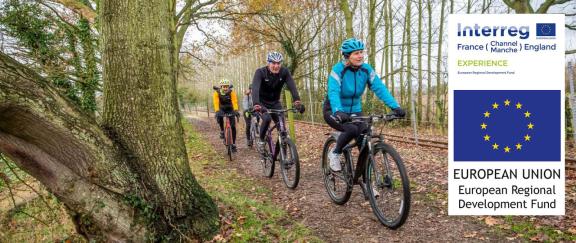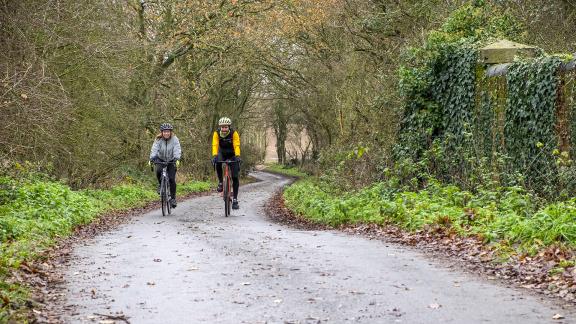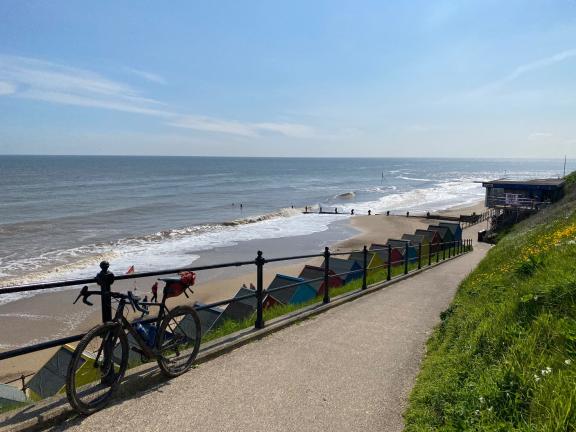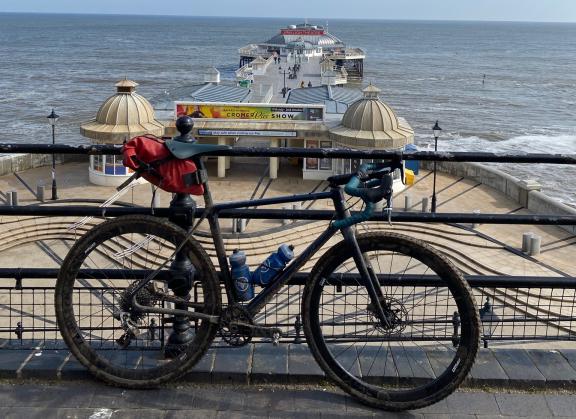
The charming resort of Cromer is one of our top cycling hubs in Norfolk. Let us introduce you to its finest cycle-friendly places and cycle routes
With a fabulous Victorian pier and seafront architecture to match, Cromer is the perfect example of a traditional English seaside resort and thoroughly deserves its ‘Gem of the Norfolk coast’ tag.
Sitting at the heart of the Norfolk Coast Area of Outstanding Natural Beauty with its long beach flanked by rich cliffs and backed by wooded hills, Cromer stands out immediately in terms of geography.
The surrounding area has an equally distinct historical and natural character too. From the nature reserves, creeks, flint wall architecture and bright boats of Blakeney, to the military vehicle collection at Muckleburgh, or the mammoth mural promenade of Sheringham and the cliffs of Runcorn which regularly cough up prehistoric animal remains, there's a wealth of fascinating quirks to explore.

Routes
Cromer roamer (40 miles)
The longest of our three Cromer routes takes you up over the hill behind town past the South American themed Amazona zoo, before rolling majestically through the National Trust parkland of Felbrigg Hall.
It continues effortlessly out through historic villages and farms offering fresh produce on almost totally traffic-free roads beneath vast skies.
You turn north though the bustling market town of Holt, then climb gently on rarely used rolling lanes before dropping to the coast at Blakeney.
From here, you daisy chain back towards Cromer, linking totally different versions of the Norfolk coast at Weybourne and the busy seaside town of Sheringham via inland loops through heath and woodland, with stories stretching back many millennia, before reversing the start back into Cromer.
Great Wood gravel ride (18 miles)
Our off-road loop takes you out through the woods past Amazona Zoo, before looping south through the beautiful grounds of Felbrigg Hall.
You then switch from Tudor splendour to off-road adventure as deserted back lanes past medieaval farms become gravel and grass bridleways swinging round up to the north again, where you’ll wind through the woods towards the kind of panoramic hilltop coastal view you’d never expect in Norfolk.
There’s even a short but sweet technical descent before you contour back into Cromer on a mix of snaking singletrack, pasture side path and a scenic golf course.
Mundesley meander (20 miles)
This southerly route rolls gently out through the quiet but genteel village of Overstrand, across the coastal Poppylands with their 360º vistas, to the seaside village of Mundesley with its much more lively feel, beautiful Blue Flag beach and rows of colourful huts.
You loop inland past a preserved windmill and huge medieaval barn that’s now a bat sanctuary, into an area of dedicated ‘Quiet Lanes’. Then it’s a parade of ancient carving covered churches in similarly quaint villages with flower filled gardens and honesty boxes for handmade jam joining the dots back into Cromer.

Cromer essentials
While there are prehistoric remains in the area and a Roman camp overlooking the town, Cromer itself doesn’t appear in records until the 14th century. That’s because the coastline is so changeable here that the previous settlement of Shipden is now under the sea several hundred metres beyond the end of the pier.
While the fishing village of Cromer became popular with local visitors through the 1700s and 1800s with some hotels from that date still surviving, fishing remained the mainstay of Cromer’s economy until the later Victorian period. That was when new railway connections saw droves of visitors coming to enjoy the long sandy beaches, splendid pier and seafood - including the famous Cromer Crab.
That delicacy as well as lobsters and other shellfish are still the main trade of the dozen or so boats still fishing from the shallow beach. Others now head out to sea to see the 20 mile long Cromer Shoal, a chalk reef dating back to the Pleistocene era and an incredible place for diving and snorkelling.
The cliffs of the ‘Deep History' coastline are also famous for prehistoric animal remains, including the remains of the largest mammoth found in the UK and an Ice Age rhino.
The pier - with its Pavillion theatre and famous lifeboat station - has survived many storms and even a plan to blow it up in the face of imminent invasion in World War II. It forms the centrepiece of the recently refurbished promenade area below the fantastical frontage of the Hotel De Paris, which serves as the starting points for all our rides.

Getting there
Take the ‘Bittern Line’ railway service from Norwich which has mainline connections to London Liverpool St, Cambridge and Peterborough.
By road, Cromer is 23 miles from Norwich on the A140 or 44 miles from Kings Lynn in the west on the A148. Be prepared to be patient though as Norfolk roads run at a relaxed pace.
More cycling experiences in Kent, Cornwall and Norfolk
Cromer is just one of our highlighted locations that's perfect for cycling. Here's Cycling UK's full set of cycle-friendly hubs, with accredited facilities and promoted routes
Cornwall: Bodmin; Helston; Penzance and Marazion
Kent: Canterbury; Dover; Lenham and Hollingborne; Otford; Wye
Norfolk: Cromer; Diss; Fakenham; Hunstanton; Swaffham; Thetford; Wroxham and Hoveton
EXPERIENCE is a €23.3 million project co-financed by the European Regional Development Fund (ERDF, €16 million) through the Interreg VA France (Channel) England Programme 2014-2020, boosting visitor numbers in six pilot regions across England and France. This project will harness the experiential tourism trend to extend the season (October – March), generating 20 million new off-season visitors spending €1 billion across the Channel region by June 2023.

